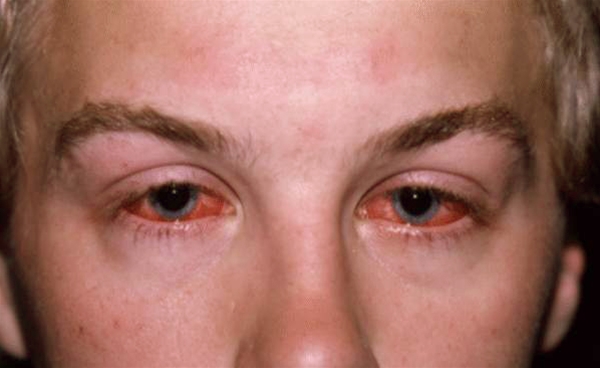Facts About Conjunctivitis
- Conjunctivitis is an inflammation of the surface of the eye, usually caused by bacteria or virus
- The condition is characterized by redness, irritation and the tendency to sticking to the eyes with pus
- In most cases, the infection by itself, but when there is suspicion that the infection caused by bacteria can be treated with antibiotic eye drops
- Children should only be kept home from daycare, if there is much pus formation
What is conjunctivitis?

Conjunctivitis is an inflammation of the surface of the eye, usually caused by bacteria or virus
What causes conjunctivitis?
Conjunctivitis caused by viruses or bacteria that are transmitted by direct contact from an infected person, for example by hand. Eye inflammation usually starts in one eye, but spread quickly to the other. The condition is highly contagious and occurs especially where many people live close, for example in day care.
What are the symptoms of conjunctivitis?
The condition typically begins with redness, itching and watering of the eyes, and the eyes are glued upon waking in the morning. Eye inflammation usually starts in one eye, but spread quickly to the other.
How is it diagnosed?
The case history is typical, and in most cases the diagnosis is made by a quick look at the eye. There is typically redness and pus, and eyelids can be glued.
In severe cases it may be necessary to carry out a grafting in order to find out which microorganism (bacterium or virus) that cause the inflammation.
How is the condition?
Eye inflammation goes in most cases by itself. When there is pus, there is a high probability that the infection is caused by a bacterium that can be treated with antibiotic eye drops.
To limit the spread of infection, it is important to practice good hygiene, including frequent hand washing, and you should not share towels with others. Contact lenses should be removed until the infection is treated.
When can my child get in the institution again?
With the current knowledge there is no basis to recommend that children with mild conjunctivitis kept home from day care to prevent infection. Children, however, should be kept at home, when there is strong pus formation until the latter has slowed down. In such cases, the child under the care of a physician who can advise as to when the child can start in day care again.
In the case of a bacterial infection, the treatment with antibiotic eye drops lead to recovery after a few hours, after which the risk of infection is over.
By virus infection, the child will be infectious until symptoms disappear.
What are the long-term prospects?
Eye infection caused by the virus pass on their own after 5-10 days. By bacterial infection inflammation untreated products from a few days up to 2 weeks, but may be placed at rest within one day with antibiotic treatment. If there occurs improvement within two to three days or coming visual impact, should consult their own doctor.
Eye Infection usually gives no long term complications.
How do I avoid or worsen inflammation of the eye?
Good hygiene is important. Infected people should wash their hands frequently and should not share towels with others as long as there is pus formation.
